How to grow sweet potatoes – for the perfect crop every time
Discover how to grow sweet potatoes for a delicious crop of this versatile vegetable
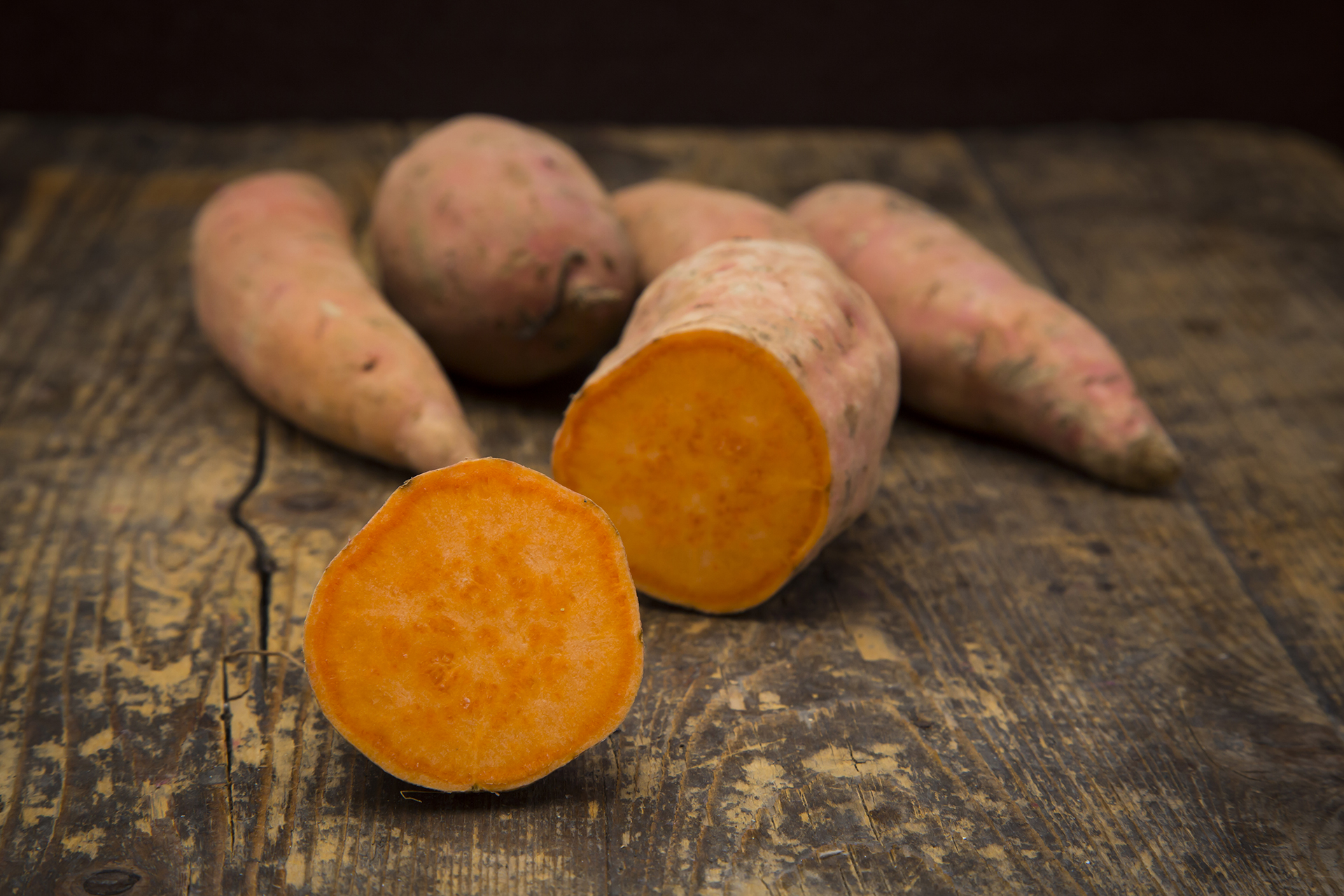

Sweet potatoes have recently become one of our favorite side-dishes. Whether mashed, chipped, wedged or roasted – they are endlessly versatile and delicious. They are also very easy to come-by with every store stocking them.
However, the varieties available are limited. Did you know sweet potatoes are not only orange, but can also be white, yellow or purple? By growing your own you can add different and exciting varieties to your vegetable garden ideas.
Purple sweet potatoes are particularly high in antioxidants meaning they are even better for you than orange sweet potatoes as they help to boost your immune system. The benefits of growing your own don't stop there – 'sweet potato leaves and the tips of young shoots can even be cooked as a spinach substitute,' suggests Sue Sanderson of Thompson & Morgan.
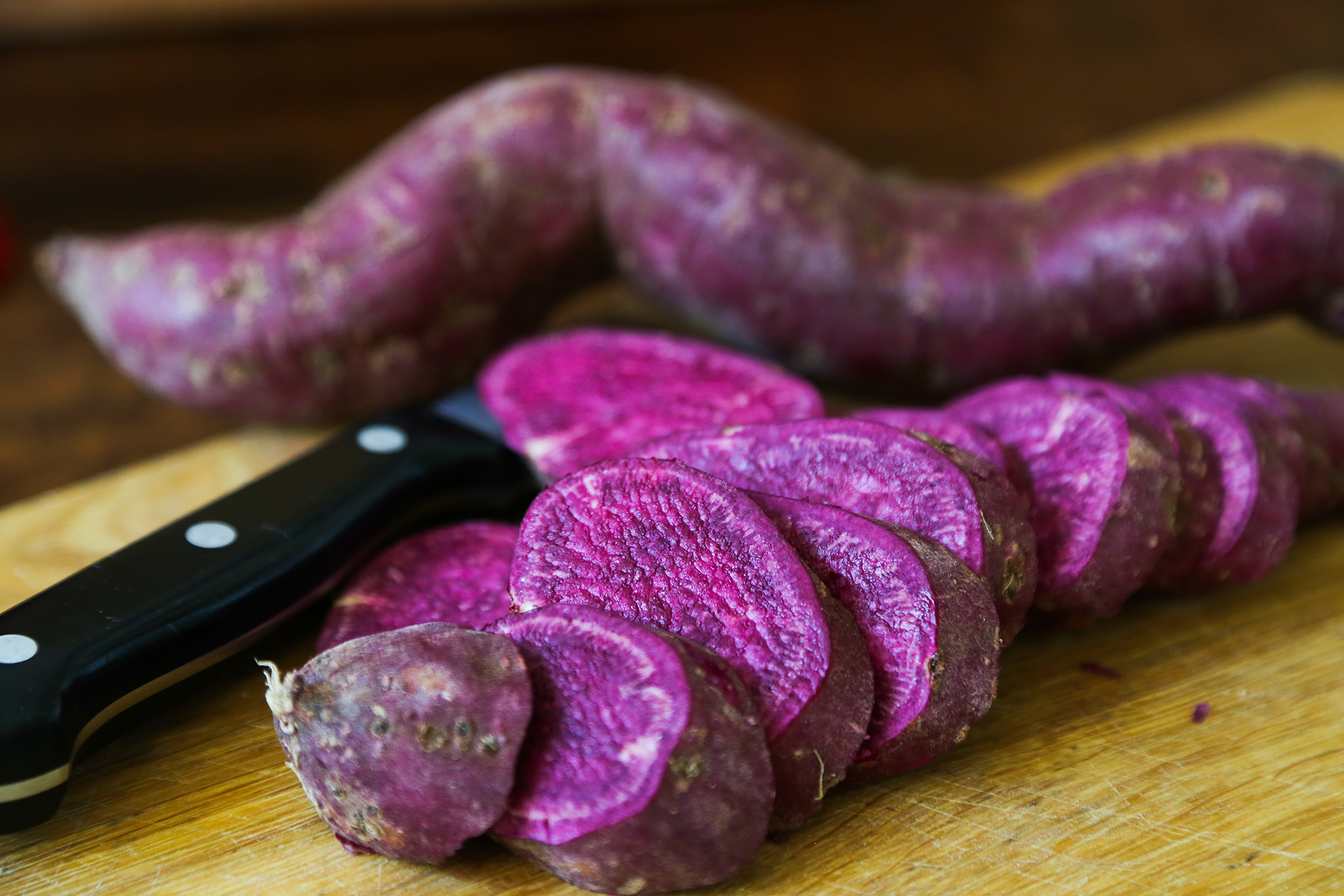
How to grow sweet potatoes
If you're a fan then learning how to grow sweet potatoes is a must. There is nothing as satisfying as unearthing your first crop and getting to enjoy its spoils. Plus, they are a great and low-maintenance addition to your kitchen garden ideas. Once planted they only really require regular watering in order to thrive.
‘Sweet potatoes are a long season crop – meaning it takes quite a few days from planting until the tuberous root (the part you eat) is ready to harvest,’ says gardening expert Melinda Myers. It will take around 100 continuously warm days to produce a good yield of tubers, so if you live in a cooler climate, it might be worth growing them indoors or in a greenhouse rather than in a vegetable patch.

Despite their name, sweet potatoes are not actually potatoes at all. They are in-fact members of the morning glory family and as a result have beautiful trumpet-like flowers. This makes sweet potatoes a great and productive addition to the flower border as well as the veg patch, which is not something that can be said for all productive crops.
Growing sweet potatoes from slips
While growing potatoes – the conventional type – is done from whole 'chitted' potatoes, sweet potatoes are grown from slips – the small shoots that grow out of the sweet potato.
There are two methods to start off your sweet potato plants. The first is purchasing sweet potato slips – these are available both online and from most garden centers. If they look withered on purchase, revive them by putting them in a glass of water overnight. Then the following morning plant in pots of peat-free soil and water well.
'When planting sweet potato slips, it's important to cover the whole length of the stem, so that it’s covered right up to the base of the leaves,' advises Sue Sanderson of Thompson & Morgan.
Place these pots on the windowsill or in a greenhouse and keep watered until you're ready to plant out.
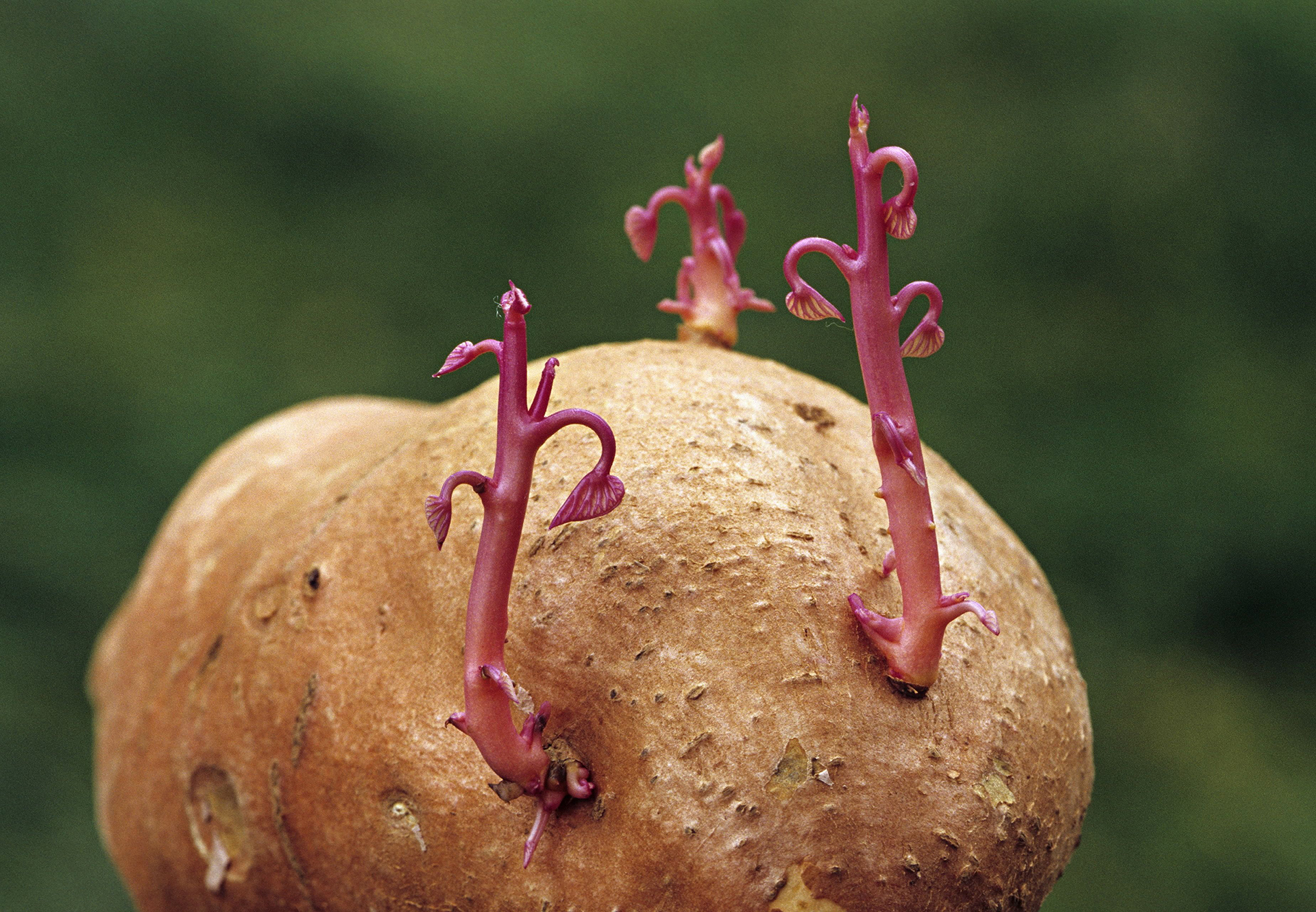
Growing sweet potatoes from chits
The second way is to chit your own sweet potatoes and harvest your own slips. You can do this either with sweet potatoes that are bred for chitting – which will be available online or at a garden centre – or you can try your luck with a sweet potato bought from the grocery store. No matter where you source your sweet potatoes from, the method is the same.
'Place tubers in moist vermiculite, perlite or sand in a warm propagator or airing cupboard to encourage sprouting,' advises Guy Barter from the RHS. 'Once sprouted, carefully cut off the sprouts of the tubers when they are 2 to 3 inches long.' Then plant the same way as you would slips.
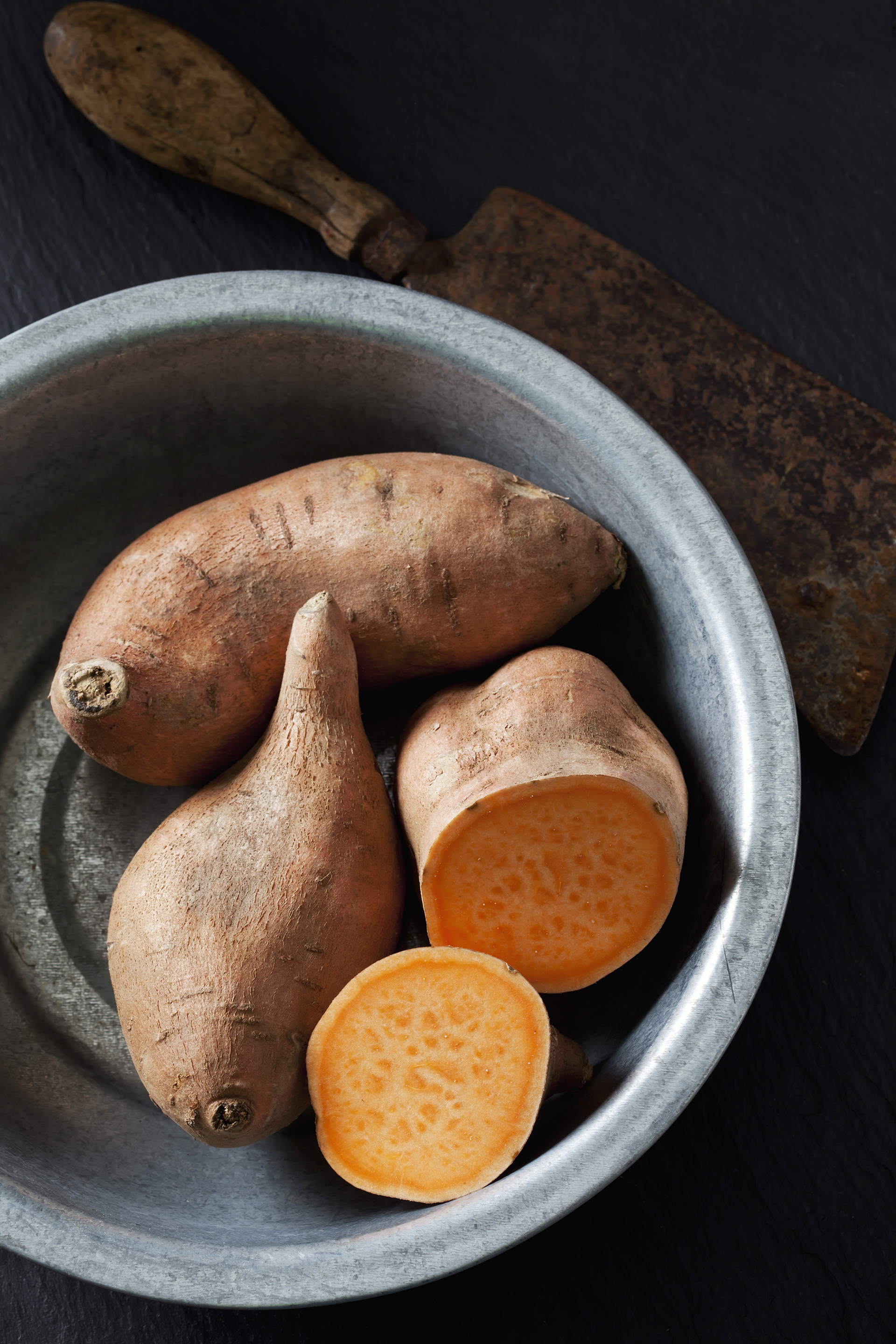
Can I grow sweet potatoes from a sweet potato?
Yes, you can grow sweet potatoes from a sweet potato – even the sweet potatoes that you buy in the supermarket or grocery store can be used to start your crop.
If you choose the grocery store route, you may have less success than with those from the garden centre as these have been bred for cooking rather than horticulture. However, they are cheap so there is little to lose by giving it a go. Be sure to opt for an organic variety as these are less likely to have been sprayed with an anti-sprouting agent and will increase your chances of success.
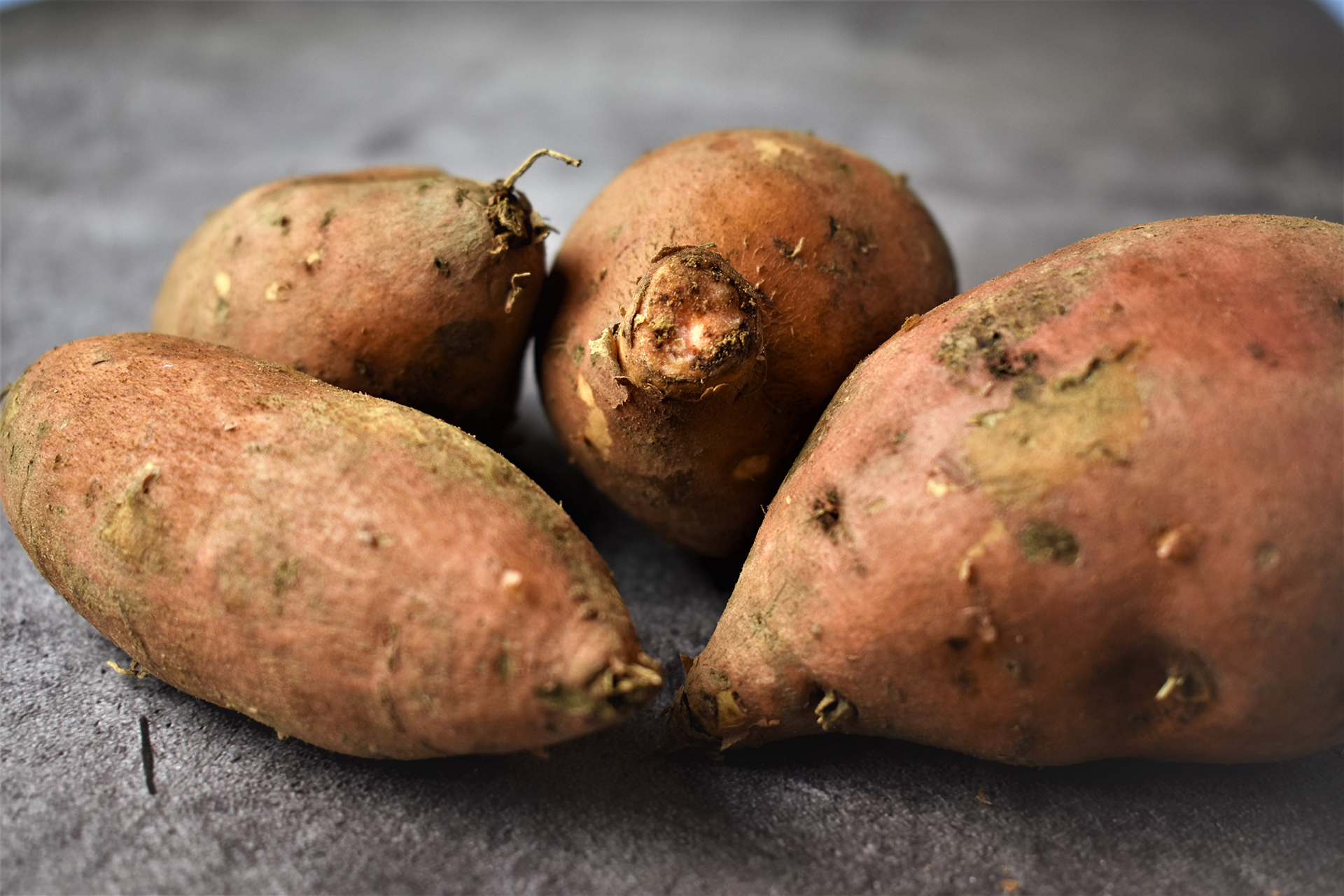
How to grow sweet potato in vegetable garden
While your slips are establishing in pots on the windowsill, it's time to prep your vegetable beds.
If you're wondering when to plant sweet potatoes, t's important that the soil is warm and all risk of frost has passed before you plant the slips outside. Start by raking your vegetable bed to ensure that the soil is loose as this will aid with drainage and help your slips establish.
If you live in a cooler area, then consider covering your vegetable bed in black polythene or trash bags weighted down with large rocks. This will keep the soil warm and will suppress weeds.
Once the frost has passed, it's time to plant out the slips. Cut slits into the black polythene every 12 to 18 inches and plant the slips into the soil. The more space you leave between the slips the better, as the closer they are the smaller the sweet potatoes will be.
Protect the young slips from slugs and snails by placing crushed egg shells around the slips. Keep watered and you'll have beautiful blooming sweet potatoes in no time.
How to harvest sweet potatoes
'Harvest sweet potatoes after a light frost when the sugars are concentrated in the edible portion,' advises gardening expert Melinda Myers. 'Dig carefully as the skins are very thin and easily damaged. Use those speared by the shovel or garden fork as soon as possible as they do not store well.' Be sure to save a few slips when harvesting and plant in pots of peat-free compost. Overwinter in a frost free greenhouse or garage then use these to start next year's crop.
It is also important that you 'cure' your sweet potatoes after they have been harvested, this will increase their longevity from a few days to several months. 'Allow them to dry on the soil surface for a couple of hours. Then move to a warm humid location for a couple of weeks. Covering them with perforated plastic can help retain humidity without encouraging rot. Once cured move to a cool 55°F dark location to store for winter,' recommends Melinda.

Can sweet potatoes be grown in containers?
Yes, you can grow sweet potatoes in a container. Sweet potatoes love moist conditions but you need to be careful to avoid them being too waterlogged as this can cause the tubers to rot. Be sure to grow potatoes in a container or grow potatoes in a bag with good drainage – a pot with large holes or a raised bed are both great options. Place your pot in the sunny spot in the garden or patio, as this will help it to establish and produce a hearty crop.

How to grow sweet potatoes indoors
Did you know that you can learn how to grow sweet potatoes as a houseplant. It's pretty trailing foliage and dainty flowers makes it a beautiful addition to any room of the home and, come fall, will also reward you with a harvest of sweet potatoes.
Grow in a warm room, near a window and be sure to water regularly. Also make sure you've factored in the vine that will either need to climb or trail.
If you want to harvest your sweet potatoes then be sure to pick a large pot, but if you're just growing them for aesthetic reasons then this is less of a concern. Either way it is vital that the pot has lots of drainage.
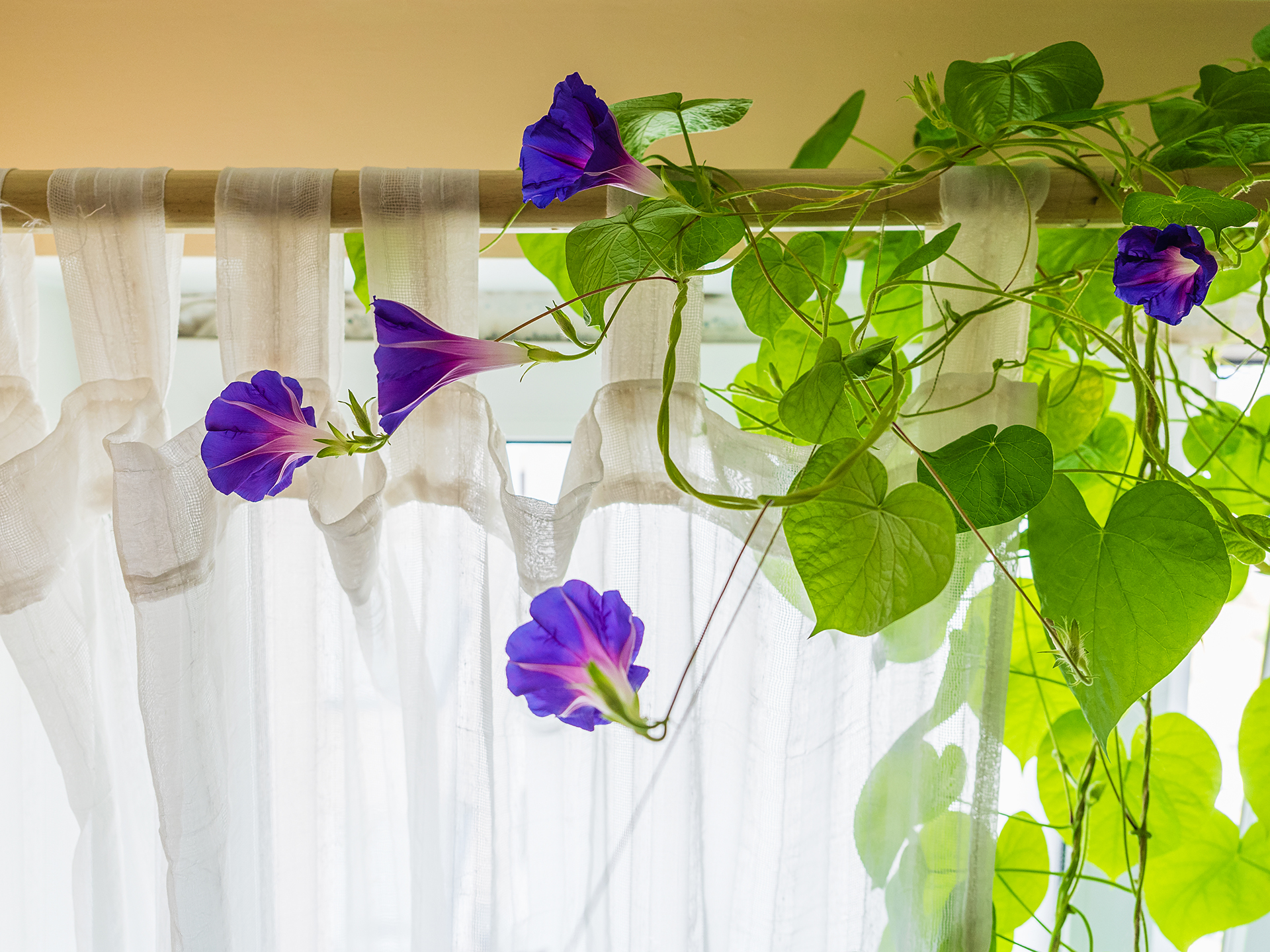
How deep should the soil be for sweet potatoes?
The soil for sweet potatoes should be fairly deep – around 18 inches. You can always top up soil with a few inches of manure which will also help fertilize your crop.
When it comes to planting your slips, they should be around 6 inches deep and buried up to their leaves. As they are root vegetables it is important that their roots have enough space to grow into large tubers in order to maximize your crop. If you are growing in containers, opt for a planter used for potatoes or a 5 gallon bucket to ensure that you have enough space.
How many sweet potatoes do you get from one plant?
You can get up to two pounds of sweet potatoes from one plant. 'However, the amount produced and size of the tuberous roots can vary depending on soil, summer temperatures (sweet potatoes thrive in long warm summers),' explains gardening expert Melinda Myers.
Once you have decided when to harvest sweet potatoes, you are not at the end of the work you need to do, unless you are going to eat them immediately. It is important to learn how to store potatoes to ensure they taste as good as newly pulled out of the ground.
Sign up to the Homes & Gardens newsletter
Design expertise in your inbox – from inspiring decorating ideas and beautiful celebrity homes to practical gardening advice and shopping round-ups.

Having graduated with a first class degree in English Literature, Holly started her career as a features writer and sub-editor at Period Living magazine, Homes & Gardens' sister title. Working on Period Living brought with it insight into the complexities of owning and caring for period homes, from interior decorating through to choosing the right windows and the challenges of extending. This has led to a passion for traditional interiors, particularly the country-look. Writing for the Homes & Gardens website as a content editor, alongside regular features for Period Living and Country Homes & Interiors magazines, has enabled her to broaden her writing to incorporate her interests in gardening, wildlife and nature.
-
 Are you making the most out of the estate sales in your area? These are the 5 most valuable items you should be shopping for
Are you making the most out of the estate sales in your area? These are the 5 most valuable items you should be shopping forVintage lovers and antique experts share the objects you should always look out for when you're exploring an estate sale
By Eleanor Richardson
-
 How to grow sassafras – for a low-maintenance native tree that can even be planted in shady yards
How to grow sassafras – for a low-maintenance native tree that can even be planted in shady yardsFor an easy-to-grow North American tree, you will not find much better than sassafras
By Thomas Rutter